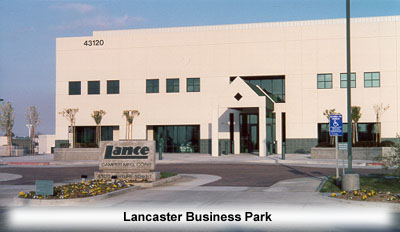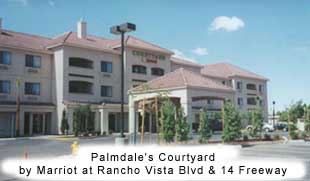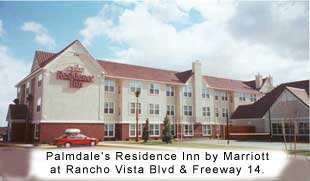Land Banking as a Retirement Strategy
LAND
BANKING is a term used by Land investors. It means to buy a piece of
land and put it away (bank it), patiently waiting to see what future
growth patterns do to its market value. Land banking is also a strategy
used by developers, buying large parcels, then putting them away until
the time is right for future development. In this section, land banking
as a strategy to supplement retirement will be discussed. |
 |
First
and foremost, land banking should not be an exclusive
method of preparing for retirement.The future is uncertain, and
no one can predict which asset class will be in vogue next year, let
alone 20 to 30 years from now. But land banking can be a way to diversify
one’s retirement plan, avoiding over reliance on any one asset
class, and thus, spreading out risk. |
BACKGROUND.
Before we get into details and strategies, a few words of wisdom. Land
banking is a retirement strategy intended to supplement
other retirement investing you hopefully have already begun. Second,
for purposes of illustration, we are going to apply this "land
banking" strategy over what most consider a working lifetime- 30
years. Some of you reading this may not work 30 more years. Others,
those in their mid 20’s, will work even longer. But, for the most
part, careers last about 30 years. |

The
more time you have until retirement, the better "land banking"
will work. The reason is simple: the sooner
you start implementing a retirement strategy, the more time the "miracle
of compound interest" has to work it’s magic. Time
is the most important component of any retirement strategy; This is
because "time" is finite; it is limited and there is only
so much of it. One cannot buy or trade for more time. So one must make
the best use of time by using it wisely and not wasting it. That means
after careful thought on what retirement strategy one will adopt, GET
STARTED! |
 |
The
ACCUMULATION PHASE of the land banking
strategy is simple: buy several parcels of land over time and wait.
How many parcels should be bought? How often should parcels be added
to your current holdings? What areas should be purchased and what areas
avoided? All good questions. Utilize time, leverage, your personal financial
situation, and the Antelope Valley’s current growth pattern to
guide you. Some may add a parcel to their holdings every year, others
every 2-3 years, and still others whenever they find a "bargain".
Again for illustrative purposes, let us be conservative. We will try
and add one new purchase to our portfolio every 5 years. In doing so,
after 30 years, we will have a portfolio of 6-7 properties. They will
be of varying sizes and locations, but should all have been in the "path
of growth" when purchased. They should also have been a "good
value" at the time of purchase. Be patient, find good properties
at good solid values. Do not overpay! Let "end users" overpay
for whatever reason they see fit, but not you. |
 |
 |
DISTRIBUTION
PHASE. As we get close to those "golden
years", it is now time to start selling. The goal at this phase
is to develop a monthly income stream through the sale of one or more
of our properties. Barring a severe recession, one should be able, on
average, to sell about one property per year. This means that all of
your property will be sold during the first 5 years or so of your retirement.
If you don’t want to wait that long, then put all of your properties
on the market at once. Another option would be to start selling your
properties 1 or 2 years before you retire. The possible benefit of selling
one property at a time, is that market values could go up dramatically
during this 5 year period. But, as we know from history, market values
can go down as well as up. When one gets closer to retirement, a selling
strategy can be decided upon then, based upon the individual’s
goals, need for future income, future plans, and the market environment
at that time. |
| SOME ADVICE. On a few of your properties, you may get "all cash" offers, but for the most part, when you sell your property, be prepared to carry a note. A note gives the seller a monthly cash flow, the very thing many retirees need. Although retired, the monthly bills are still going to come due. Once all properties are sold, one will be getting monthly payments on 6 or 7 different notes- one from each property sold. This can add up to a tidy sum and provide a very lucrative supplement to one’s other retirement income The selling of these 6 or 7 properties on "terms" sets up a future monthly income stream, which was the original goal of this "land banking" strategy. If one is fortunate enough to get a few "all cash" deals when they sell, this "lump sum" of money can be invested somewhere else to provide income, i.e. bond mutual funds or a growth and income fund etc. One should also realize that when carrying 6 or 7 notes, there is a chance that one or more of the notes could go into default. This would require a foreclosure action by the note holder to reacquire the property, at which time the note holder could sell the property again. In California, a foreclosure action takes 3 to 4 months. |  |

OUR OPTIMAL GOAL would
be to sell our property to a end user, such as a developer. If this
were to happen, you will have experienced substantial appreciation
in your property Other things which can happen to your property, over
the years, to increase its value, could be, but are not limited to: |

IN CONCLUSION, no one has a crystal ball to look into the future with perfect clarity. And there is never any assurance of how long any trend can go. But California, by choice, is THE most desired place to live in the US. In California, Los Angeles County is THE most populous, and therefore the most highly desired, place to live and work. But Los Angeles County is running out of places to grow. The Antelope Valley has the current solution to a future problem: an abundance of relatively cheap and affordable land. The Antelope Valley has 49% of all the land in Los Angeles County! |

Each investor should come to their own conclusions about the answers to the above questions before making a decision on whether or not Antelope Valley land should be in their investment portfolio. Will Rogers, an early 20th Century humorist, said of land investing, "Don't wait to buy land, buy land and wait!" |